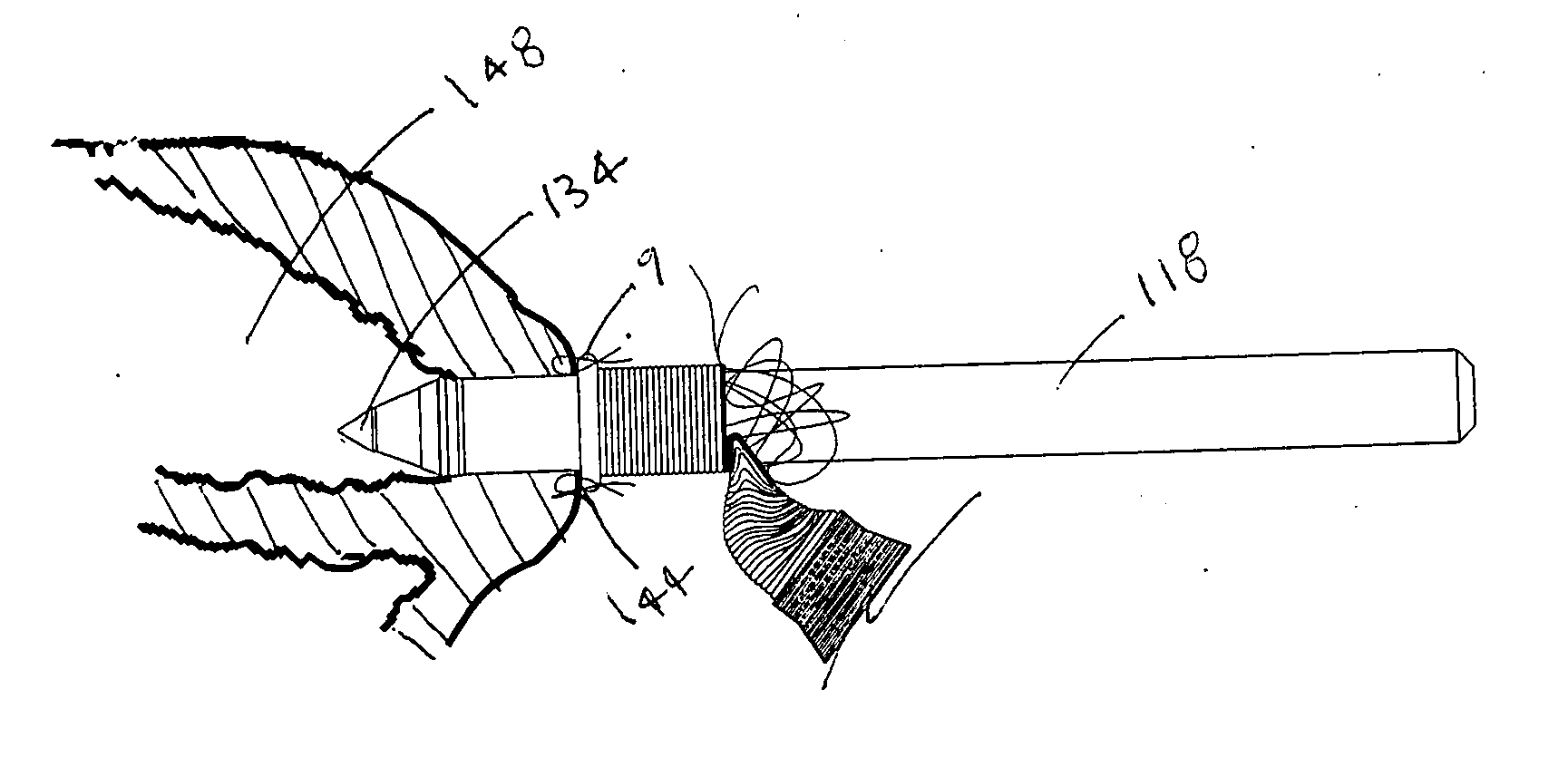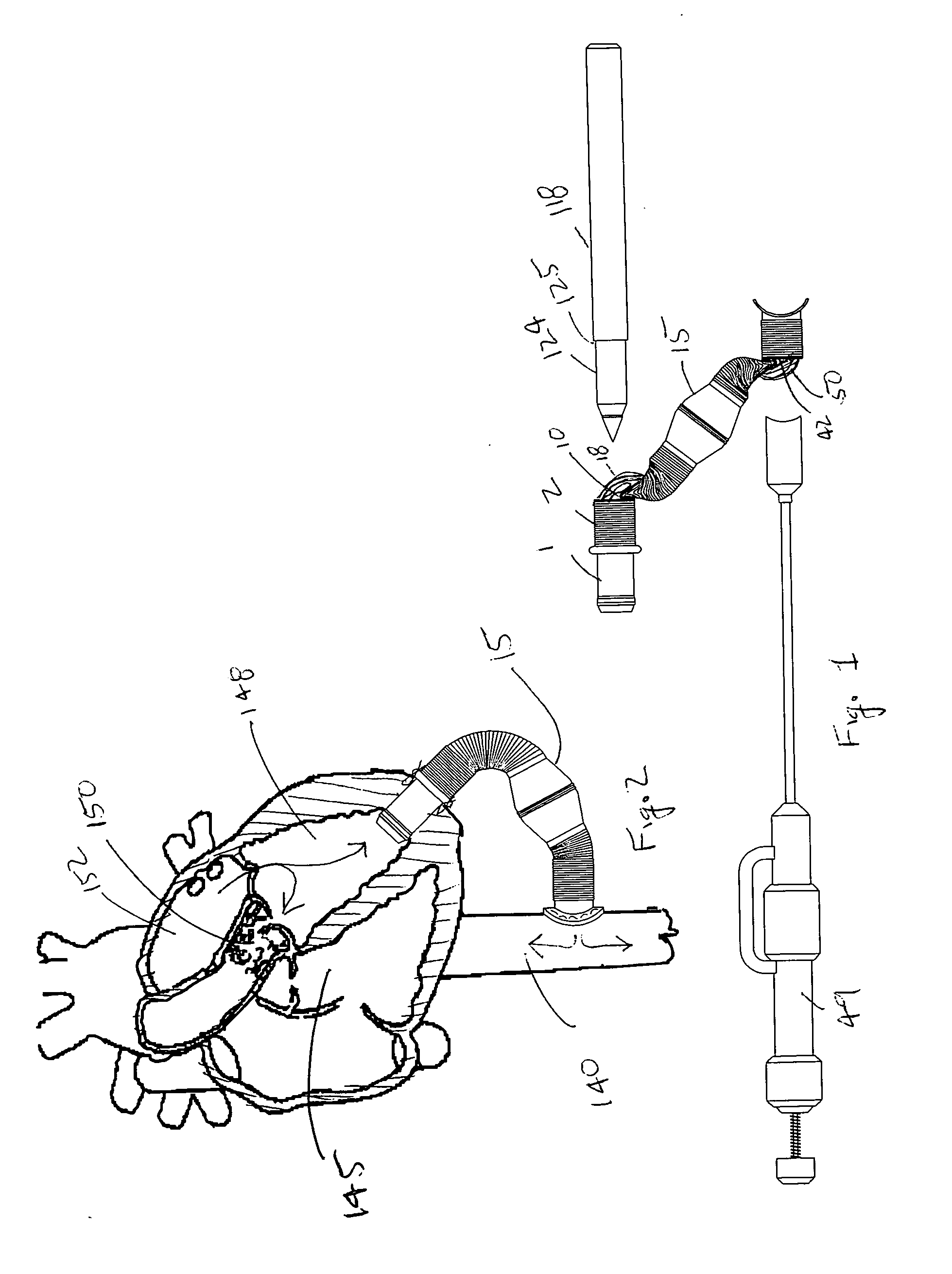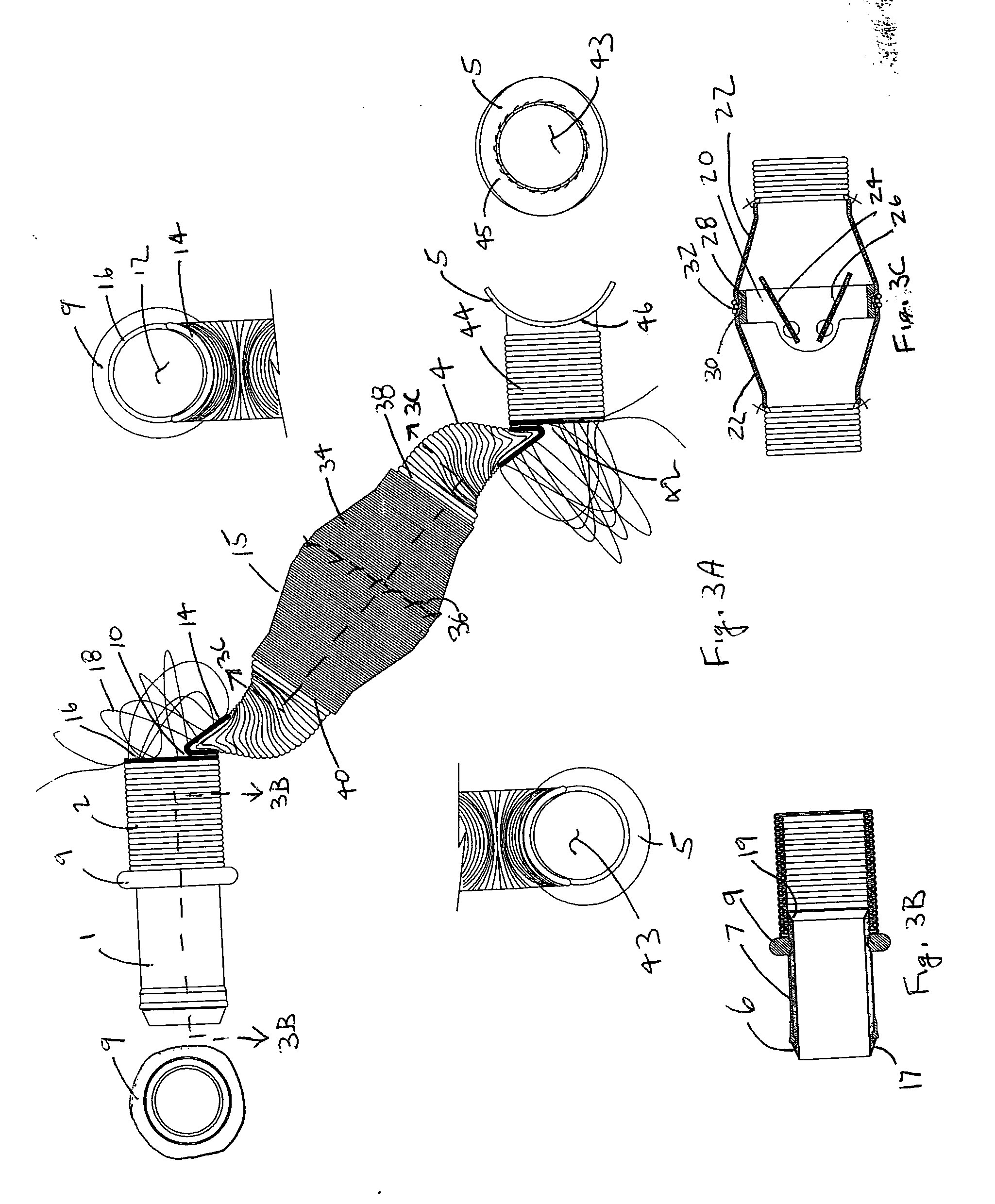Valve bypass graft device, tools, and method
a valve bypass and graft technology, applied in the field of valve bypass graft devices, can solve the problems of inability to gain popularization among surgeons, excessive blood loss, potential stroke, etc., and achieve the effect of fast completion of the implant procedure, reliable and safe method, and no stopping or reducing blood flow through the aorta
- Summary
- Abstract
- Description
- Claims
- Application Information
AI Technical Summary
Benefits of technology
Problems solved by technology
Method used
Image
Examples
Embodiment Construction
Structure
Valve / Conduit Implant
[0076] A preferred embodiment of a Valve / Conduit Implant 15 is shown in FIGS. 3A-C. The implant is comprised of five main assemblies as shown in FIG. 3A; a Ventricular Connector 1, a Ventricular Conduit Segment 2, a Valve Segment 3, a Aortic Conduit Segment 4, and an Aortic Cuff 5. The assemblies are integrated into one implant device called the Valve Bypass Conduit. The following is a more detailed description of each assembly.
[0077] The Ventricular Connector 1 is composed of two elements as shown in cross section in FIG. 3B; a Ventricular Orifice 6 and a Ventricular Cuff 7. The Ventricular Orifice 6 is cylindrically shaped and composed of a rigid biomaterial material such as stainless steel, titanium, or pyrolytic carbon. The internal diameter of the Ventricular Orifice in a preferred embodiment would be sized to have a cross sectional area of about 2 square centimeters, which equates to a diameter of about 16 millimeters. Depending on flow require...
PUM
 Login to View More
Login to View More Abstract
Description
Claims
Application Information
 Login to View More
Login to View More - R&D
- Intellectual Property
- Life Sciences
- Materials
- Tech Scout
- Unparalleled Data Quality
- Higher Quality Content
- 60% Fewer Hallucinations
Browse by: Latest US Patents, China's latest patents, Technical Efficacy Thesaurus, Application Domain, Technology Topic, Popular Technical Reports.
© 2025 PatSnap. All rights reserved.Legal|Privacy policy|Modern Slavery Act Transparency Statement|Sitemap|About US| Contact US: help@patsnap.com



